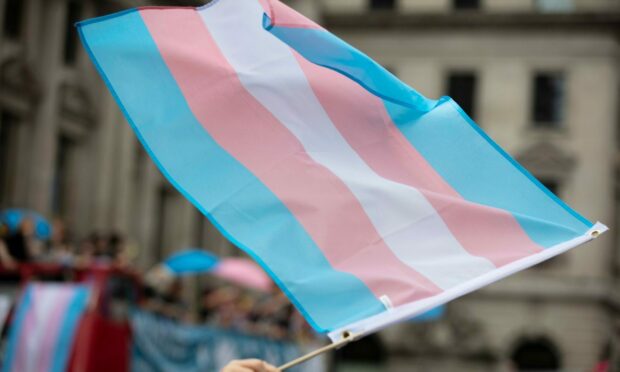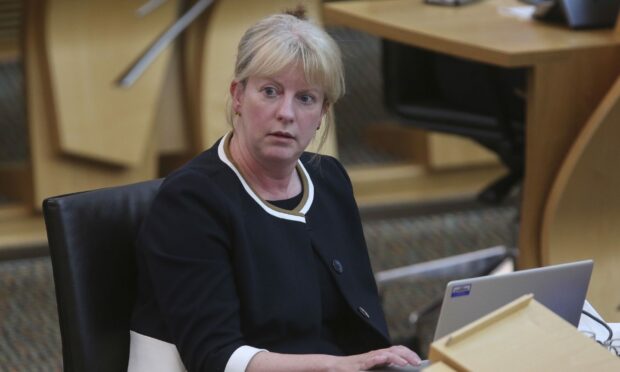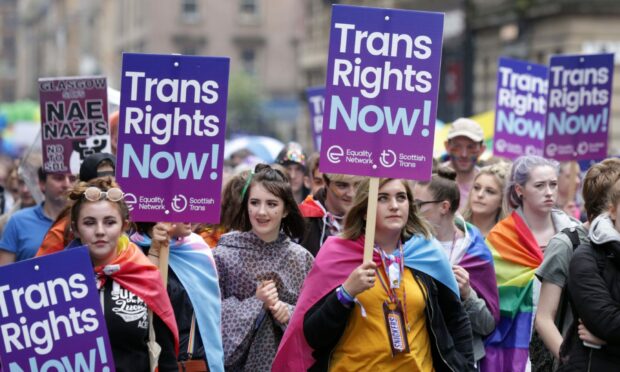A blueprint to allow people to self-identify as transgender without a medical diagnosis has been laid before the Scottish Parliament, leading to renewed focus on equality and women’s rights.
The long-expected reform of the Gender Recognition Act had been delayed by the upheaval of the Covid-19 pandemic.
SNP government minister Shona Robison, publishing the details, said the proposals do not introduce “new rights” – but will “simplify” legal recognition for transgender people.
Some feminist campaigners say Scottish ministers will be reaching “well beyond its devolved powers” if the Bill is passed into law.
The reaction to the plans has been heated in recent years, with claim and counter-claim about the impact it will have.
We take a look at the proposals, what the law says, where the concerns lie, and what it really means for equal rights.
What is the Gender Recognition Act?
Trans people have been able to apply for legal gender recognition through a Gender Recognition Certificate since 2004.
Obtaining a gender recognition certificate means a trans person is legally recognised in their acquired gender and can obtain a new birth certificate showing that gender.
However, not all trans people do so and no one is required to have one.
Legal gender recognition is not required for someone to transition socially or medically, or to change the gender or sex recorded on most identification documents, including passports and driving licences.
What are the proposals in the bill?
The proposed changes would allow trans people to receive legal recognition through self-identifying as a man or a woman without a medical diagnosis of gender dysphoria.
The bill will require applicants to make a legally binding declaration that they intend to live permanently in their acquired gender.
The proposals in the bill include:
- Removing the requirement for a medical diagnosis and evidence of gender dysphoria.
- Reducing the requirement for an individual to live in their acquired gender from two years down to three months. This will be followed with a reflection period of a further three months before a certificate is granted.
- Reduction of the minimum age of applicants from 18 to 16.
- Applications to be made to the Registrar General for Scotland instead of the Gender Recognition Panel, a UK tribunal.
As is the case under the existing law, there will be no requirement for applicants to undergo gender reassignment treatment.
Speaking in parliament, Ms Robison said the Scottish Government expects the number of people applying for a gender recognition certificate to rise from around 30 to between 250-300 per year.
She confirmed ministers a new provision will require annual reporting, including on the numbers applying for and obtaining a gender recognition certificate.
What are the concerns?
Some women’s rights groups have concerns around the self-identification of gender and how this could impact on women’s rights to single-sex spaces, including refuges, as set out in the Equality Act.
The Scottish Government say the bill does not make changes to single-sex exceptions in the Equality Act, which allow for trans people to be excluded when this is a “proportionate means of achieving a legitimate aim”.
Policy analysts, MurrayBlackburnMackenzie, said in a statement that the Scottish Government “continues to fail to appreciate that removing all medical oversight from the process will expand the pool of people eligible to change their sex in law”.
The group added: “This is about more than a simple administrative reform and will implications for other people.
“We also remain concerned that MSPs are being asked to legislate whilst the relationship between the Equality Act 2010 and Gender Recognition Act 2004 remains unsettled.
“The debate brought out that the Scottish Government still struggles to provide coherent responses to questions about direct practical effects.”
The most recent Holyrood election saw some gender critical feminist voters abandon the SNP over the issue and make a new political home in Alex Salmond’s Alba Party.
The UK’s equalities watchdog wrote to the Scottish Government earlier this year asking it to pause the reforms, citing concerns around potential implications on women’s rights.
The Equality and Human Rights Commission (EHRC), which monitors equality and human rights across Scotland, England and Wales, told Ms Robison that “more detailed consideration was required”.
Why has it been brought forward?
The Scottish Government says the current system has an “adverse impact” on people applying for gender recognition, due to the requirement for a medical diagnosis.
Social Justice Secretary Shona Robison said many trans people find the current system for obtaining a gender recognition certificate “intrusive, medicalised and bureaucratic”.
The changes aim to simplify and improve the process for a trans person to gain legal recognition, which has been a right in the UK for the last 18 years.
The Scottish Trans Alliance say the reforms would make the process of gaining legal recognition “much fairer, less distressing and reflect changing attitudes about trans people”.
Vic Valentine, manager of the organisation, said: “The current process is difficult, stressful and expensive, and it reinforces harmful stereotypes about trans people, that who we are is a mental illness, and that our choices about our bodies are not our own to choose to share with others.
“While the proposals fall far short of a law that would enable all trans people in Scotland to be legally recognised as who we are, this important step forward is one that we hope that all MSPs across the chamber can support.”
It also creates a “massive barrier” for trans people because of lengthy waits to access a medical diagnosis, they said.
The SNP, Greens, Liberal Democrats and Labour have all shown support for reform of the legislation.
However, Nicola Sturgeon is facing calls from within her own party to allow a free vote on the issue.
Earlier this week Scottish Finance Secretary Kate Forbes refused to say if she would support the bill.
The Scottish Conservatives say they recognise the “case for improving the system” but this “must not come at the expense of women’s rights or women’s safety”.
Several Tory MSPs raised concerns in the Holyrood chamber when Ms Robison outlined the details of the bill, including Meghan Gallacher who said “the proposals as they stand do not protect women’s rights”.
What is the public reaction?
There have been two public consultations on proposed changes.
The first, which opened in November 2017, received more than 15,500 responses, with 60% agreeing that applicants for legal gender recognition should no longer need to produce medical evidence.
The second, which opened in December 2019, received more than 17,000 responses, with submitted responses showing a “small majority” broadly supported changing to a system of self-identify.
However, around four in 10 organisations did not support changing to this model.
A recent BBC poll revealed 57% of people would support making the process to acquire a gender recognition certificate easier but this dropped quite significantly when specific self-id proposals were polled.
A total of 40% of people support the right of trans people to self-identify their gender but 38% did not, showing opinion is divided over the specifics.
More on gender recognition reform:
- Forbes calls for ‘respectful debate’ on gender recognition reform
- Most Scots support GRA reform but are not heavily engaged in debate, poll finds
- Call for Scottish Government to pause on gender recognition reforms
- SNP MP shares message calling for colleague Joanna Cherry’s expulsion from party
- Trans rights: How gender recognition reform became one of Scotland’s most heated debates
- Scottish Parliament needs to have difficult debates on trans rights and LGBT+ mental health, says MSP



